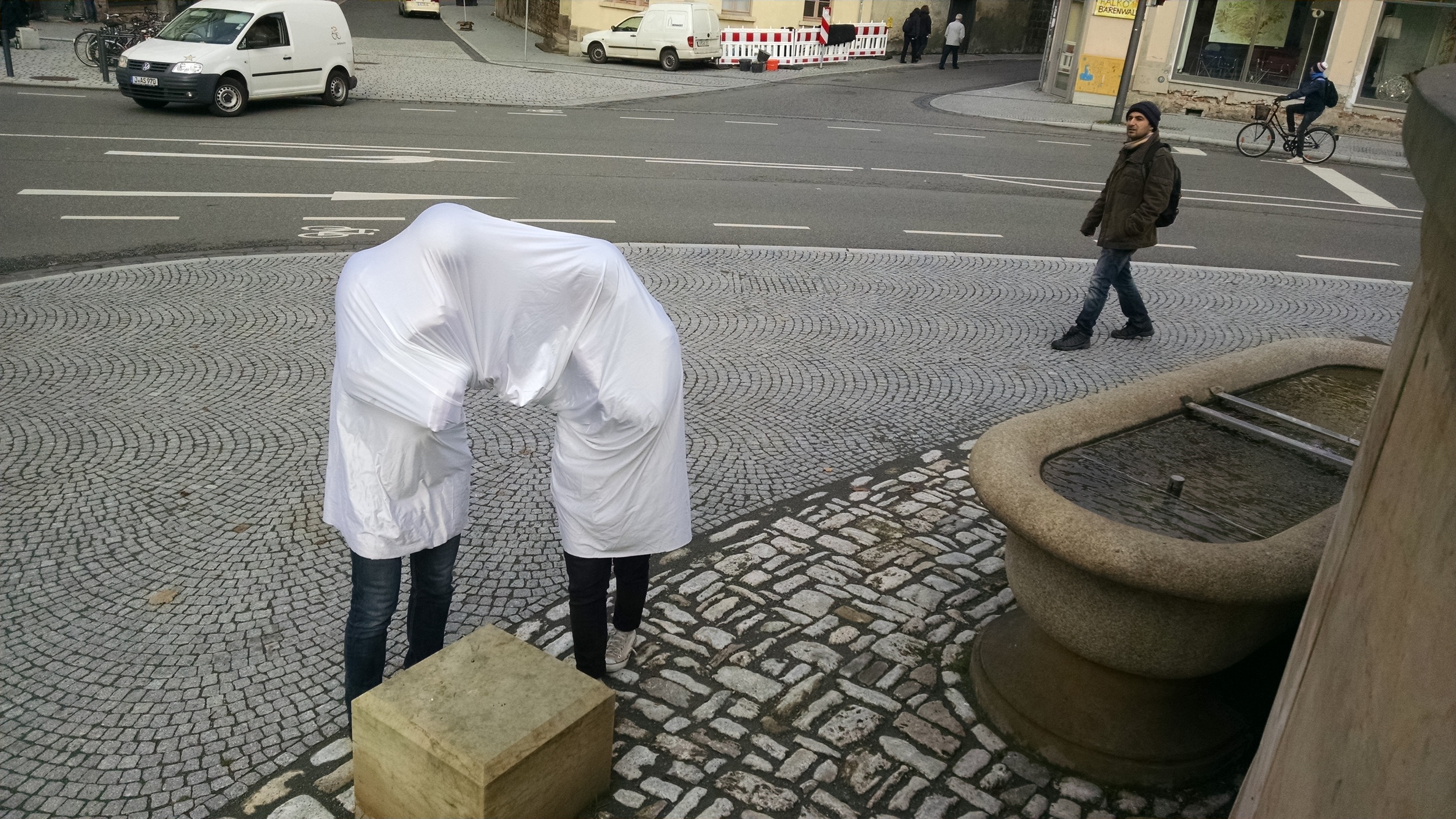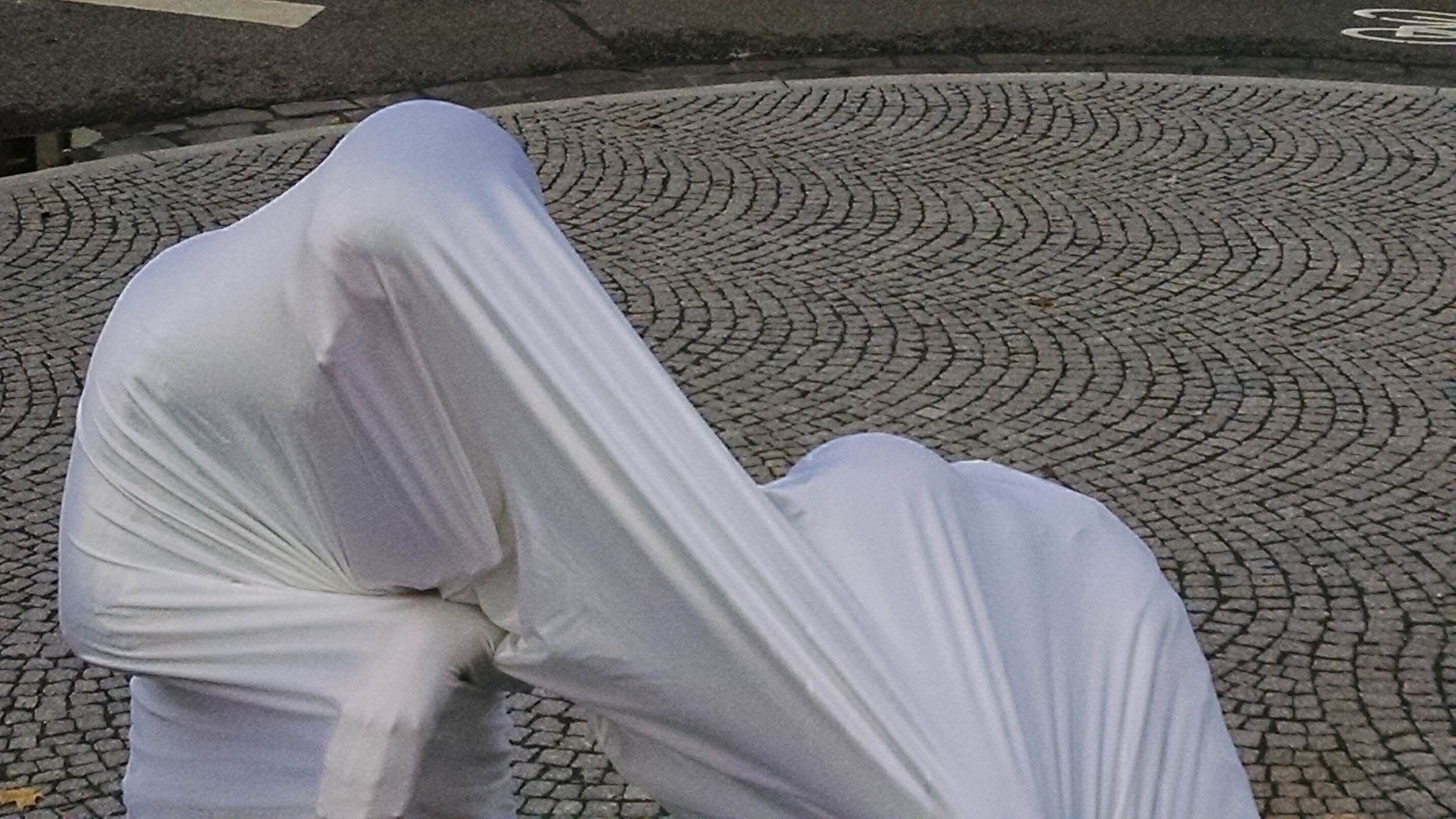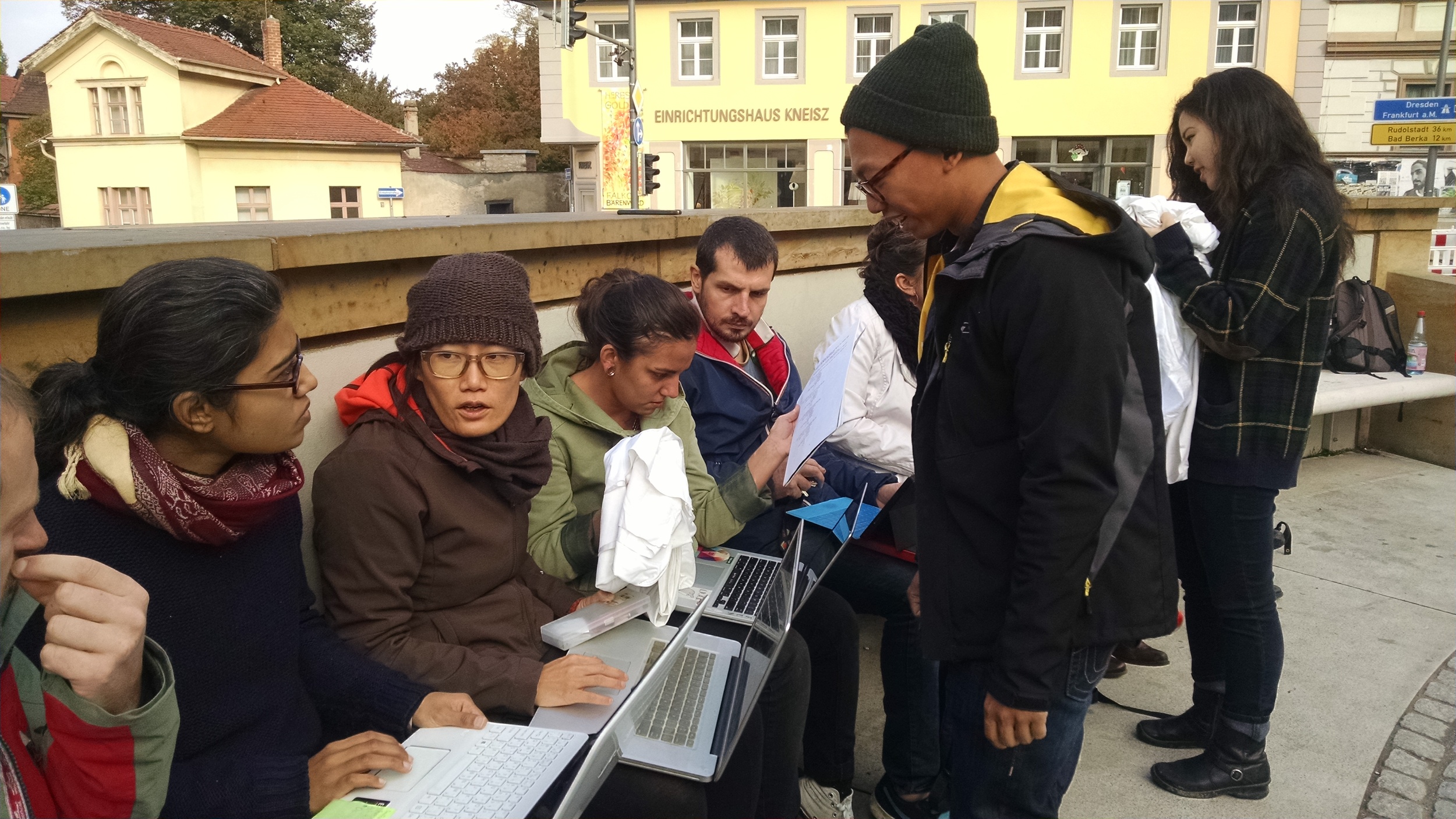NoExit/Anamnesia: The Border as Open Wound: Dispelling Myths of Scars, Healing and Resolution
Cultural history + Art practice + Urban design graduate 2015 Bauhaus-Universität Weimar, Germany




WORKSHOP DESCRIPTION:
"You can see the border, the pilot said. Very long long empty stripes. You see? Yes I see. But we’ve crossed them. Damn it, we’ve crossed them! Congratulations! Said the pilot. Pasdrawljaju.
Looks like a scar. A damn large scar.
Down there they won’t see it.
Damned shit, he said, we simply crossed the entire shit.“
(A.R. Strubel, in: Tupelow 134, 2004. Two GDR citizens hijack a plane from Poland with a toy gun and land in West Berlin. Based on facts that took place in 1978.)
A 3-day interdisciplinary workshop exploring alternative ways to collect, experience, produce and physically rub against the shape and surfaces of collective memories of "border" in our consciousness as well as in public space. What is the relationship between identity, national boundaries and our own internalized structures policed by society that make it possible for ways of thinking to be transported through history and for others fall by the wayside? Can we enlarge or transform these filters?
This workshop responds to Grenzgang- an ancient practice still active in Biedenkopf, Hessen, where the entire population of the town is called upon to ritually walk along the border of the territory of the town, in order to imprint the population with a memory of boundary.
Through collective movement exercises, mobile performative lectures and experimental drawing, we will engage the city of Weimar- paradoxically laden with cultural achievements, tragedies and horrors of German nationalism- as our terrain of experimentation.
Cultural scientist Aleida Assman describes how collective memories make possible and prevent new knowledge by filtering out what whatever individual memory does not mesh with mainstream thought. Cultural memory transports what is left to the next generation. Dealing strategically with the concrete immediacy of these new borders requires practical applied research into laws, activist practice, potentialities of resistance and the layout of the city. But what about the connection between these material borders and the edges and boundaries of memories in the mind? In an era where borders and concepts of nationalism are increasingly being transgressed and fortified throughout Europe and the United States, what agency is currently being performed and what agency can we perform in this shaping process?
Drawing upon the research of neuroscientists, performance artists, cultural theorists, and architects, we will produce methods of temporary collectivity, respond to ordering systems in public space, and experiment in self-determining filters active in the production of collective memories and identities.
Day 1: Surfaces + Forensics: Weimar Frottage and Writing workshop. Lead by Kate Clark
Day 2: Roundabouts + Blender Workshop. Lead by Emily Verla Bovino + Philippe Schmidt, urbanist
Day 3: Borders of memories + Memorial & Festivalization: Lead by Lisa Glauer
---
Co-designed by Kate Clark, Lisa Glauer and Emily Verla Bovino with the participation of Philippe Schmidt.
Roundabout form-dance spatial-exercise with Blender animation movement (Emily Verla Bovino) with the assistance of UCSD Urban Studies and Planning majors Harold de la Cruz and Jane Kang. Spandex tubes contributed by urbanist Philippe Schmidt; Rubbing Workshops contributed by Kate Clark, Memory and public space Workshop contributed by Lisa Glauer
Workshop Participants: MFA + Urban Studies Students of Bauhaus-Universität Weimar and University of California, San Diego
Workshop Support: Bauhaus-Universität Weimar and UC San Diego

